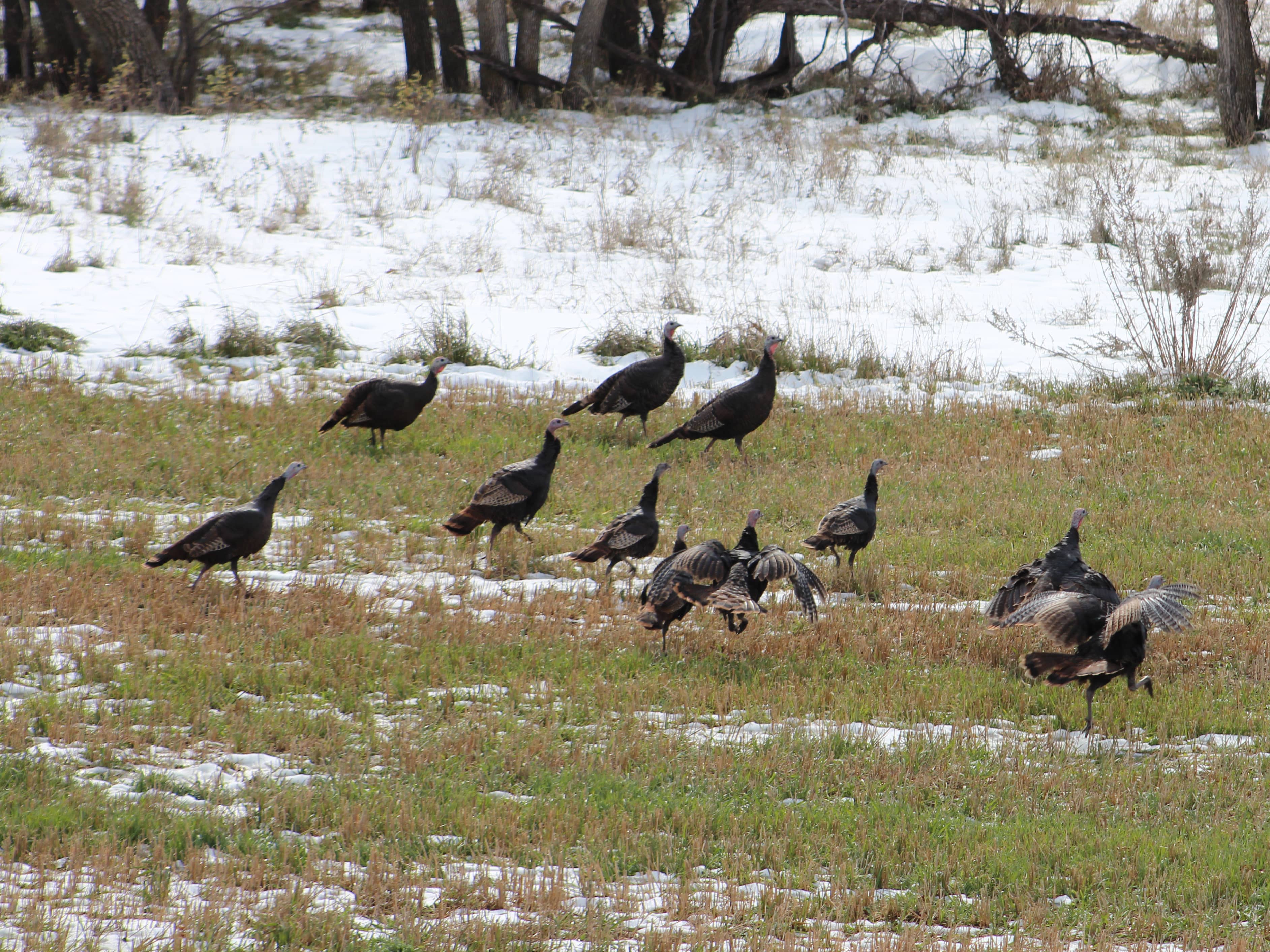
Lingering snow will likely factor into spring wild turkey hunting efforts across North Dakota when the season opens on April 8, but habitat and recruitment concerns are minimal. Simonson Photo.
By Nick Simonson
While the official first day of spring has come and gone, the outdoor world still looks much like winter as snow events continue across North Dakota. While just two weeks out, hunters participating the spring turkey hunting season will likely face some snow-related challenges when it kicks off on April 8. Despite that fact, turkey populations are in good shape throughout the state, and hunters should see good opportunities to harvest a bird this season, according to Clayton Lenk, District Biologist for the National Wild Turkey Federation (NWTF).
“Overall, I’d say [wild turkey populations] are looking pretty good, especially out in the western portion of the state. When you start getting into more of those riparian areas where the birds tend to be along the Missouri and Little Missouri,” Lenk predicts, adding “there has been a little bit of weather, but overall I don’t think that will affect the birds too bad this year.”
This year, North Dakota’s turkey units saw a slight decline in the number of licenses offered, with a total of 7,412 tags available to hunters overall. This was off 235 compared to the spring of 2022. Two units had increased opportunities, eight exhibited lower populations and lower tag numbers as a result, while 11 units remained the same as the previous spring hunting season. As with other populations of huntable wildlife, habitat remains a critical component in sustaining birds and Lenk feels things remain good overall for the present season, with a lot of upside for those looking to improve turkey habitat on their properties.
“There are no real condition concerns, but there are always ways to improve habitat. Obviously better, more diverse habitat would be more ideal for hens, just from a camouflage standpoint and just from a nesting opportunity standpoint as well. There’s always chances to improve habitat, especially with some programs like CRP where landowners can get some of those costs shared through those types of programs,” Lenk explains.
In addition to opening access to turkey hunters across North Dakota, NWTF is banking on private lands partnerships and work with government agencies and non-profit organizations to maximize areas where turkeys can nest, rear their broods and thrive in the state and throughout the Midwest.
“A lot of what we do in North Dakota are grazing improvement projects, which don’t sound very habitat-oriented at the surface, but when we start looking at livestock exclusions from riparian areas with fencing and things like that allowing those riparian areas to grow back and flourish to the native vegetation that should be there, those are the types of things that provide those brooding habitats and roosting habitats,” Lenk explains.
More information on NWTF habitat initiatives can be found by visiting NWTF.org. This year’s North Dakota spring turkey hunting season begins on Apr. 8 and ends on May 14. Hunting hours are from one half hour before sunrise until sunset.
